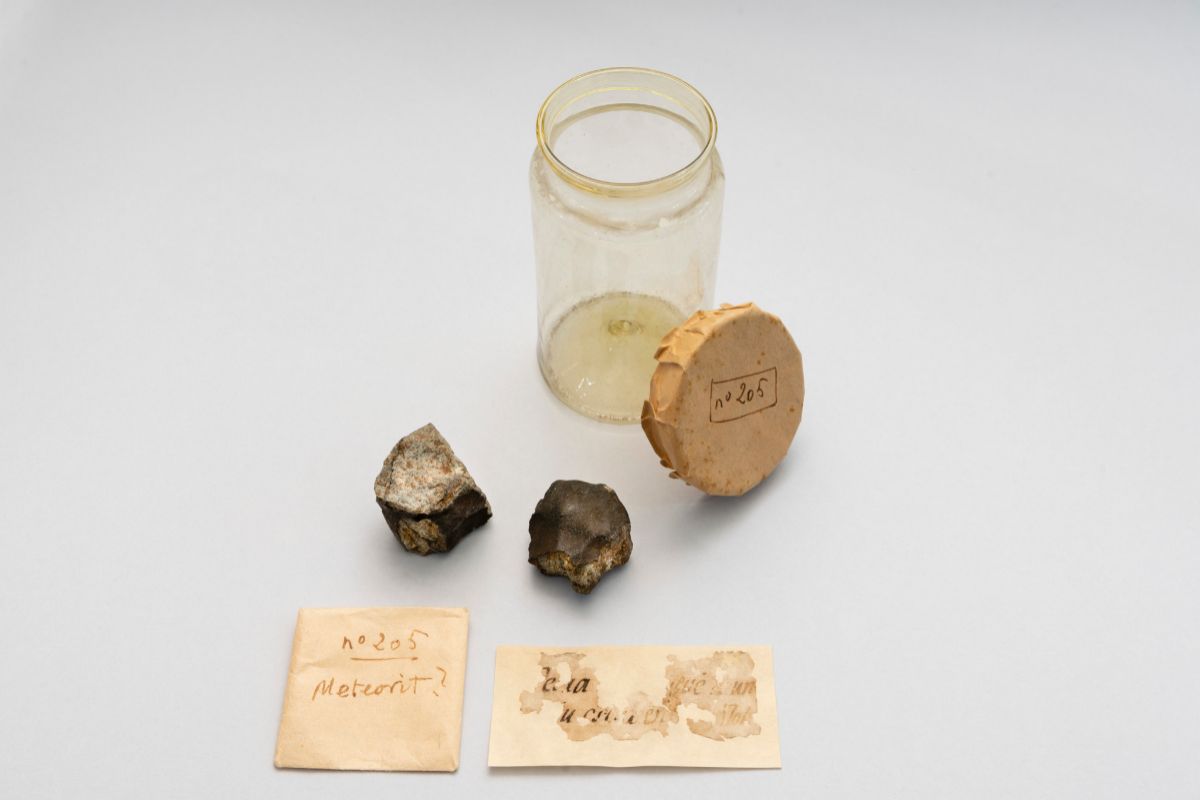They are two fragments of 50 and 34 grams that were found in a glass jar when cataloging the scientific collections of the cabinet of curiosities of the Salvador family, a saga of botanists and apothecaries in Barcelona. They correspond to a meteorite that fell on Christmas day 1704 around five in the afternoon near Barcelona, at a time when one of the most important wars in the History of Spain was going on, not only because of the change of dynasty but because of the use it has had in recent independence claims.
And the fact is that not only is the date of 1714, when Barcelona surrendered to the troops of Felipe V, but it is plagued by other relevant events such as the Treaty of Utrecht or the siege of Brihuega. Although it may seem a minor fact and far from the war, the meteorite fall was also used as propaganda during the war.
According to twenty documents of the time, a strident fireball fell near Terrassa and it could be seen in the sky from Marseille or Barcelona. The researchers believed that no trace was left, although it is the seventh oldest meteorite in the world that is preserved and the third in Europe. It has been hidden in a cabinet of curiosities or wonders, spaces where exotic objects from all corners of the known world of the sixteenth, seventeenth and eighteenth centuries were collected and exhibited and belonged to the Salvador family. These cabinets were fundamental in the elaboration and transmission of knowledge about nature for three centuries.
The magazine 'Meteoritics and Planetary Science' explains the scientific discovery, based on a study carried out by the Universitat Politècnica de Catalunya (UPC), the Museu de Ciències Naturals de Barcelona and the Science and Technology section of the Institut d'Estudis Catalans, and he contributes these documents in which his fall is explained and it is indicated that he had a divine origin. In this sense, the meteorite fell on Christmas Day and during the War, which gave rise to numerous predictions and superstitions. The two sides used it for propaganda purposes: the supporters of Archduke Charles of Austria as a sign of God in his favor and those of Philip V as a warning to the Catalans.
The study presented also has a description of the composition of the fragments, consisting mainly of silicates and small metallic particles, which correspond to a chondrite possibly from a primitive asteroid between the orbits of Mars and Jupiter. The researchers compared these remains with those of the other four meteorites fallen in Catalonia, and whose remains have been found in Nulles (1851), Cañellas (1861), Girona (1899) and Garraf (1905), and conclude that they cannot be confused with that of 1704.
The fragments were inside a glass jar from the collection that had a label with the inscription, incomplete and half erased: "(Pe [d] ra [que ca] ygué d'un [..] [..] u es [..] in [..] and 1704) ". The Salvador family's cabinet could be visited in the back room of their premises on Calle Ample in Barcelona and contained objects from the 17th century to the mid-19th century. The Botanical Institute of Barcelona preserves all the furniture and the shelves, a library with more than 1,500 volumes, a unique herbarium with almost 5,000 sheets, some 14,000 specimens from the animal, vegetable and mineral kingdoms, as well as travel diaries and numerous correspondence, all of great scientific value according to researchers.
In accordance with the criteria of The Trust Project
Know more- Catalonia
- Barcelona
- Girona
- Europe
- science
- history
Catalan schools and institutes will open in June
Environment They find in Girona a species of newt that was believed to be missing
VehiclesNortazo to the Government: Sánchez guaranteed employment and Churches proposes nationalizations

